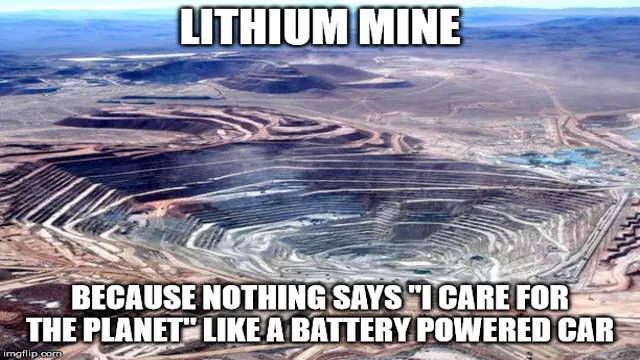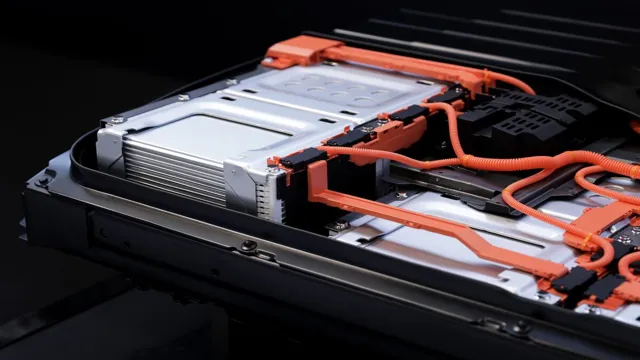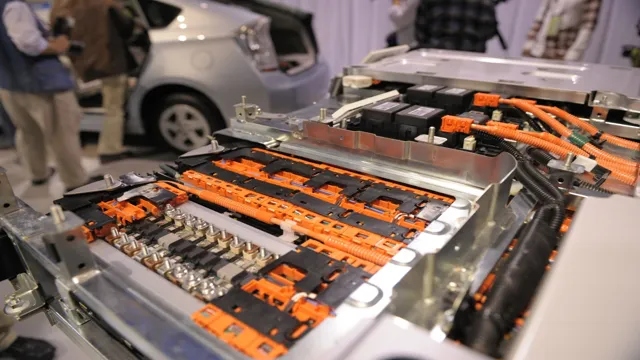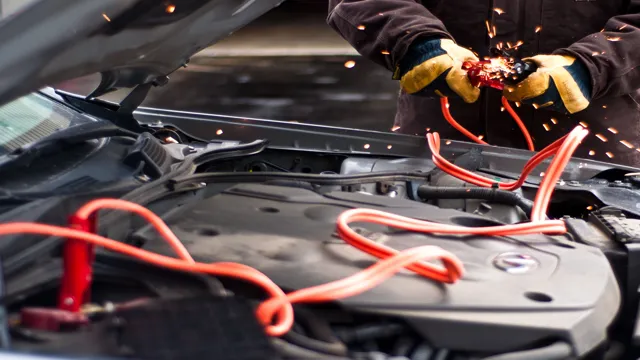Exploring the Ethical Implications of Conflict Minerals in Electric Car Batteries
Electric cars are touted as environmentally conscious alternatives to gas-guzzling vehicles. They are equipped with advanced electric batteries that store the energy required to power the car. However, not many people realize that the production of these batteries involves a controversial subject – Conflict Minerals.
Conflict Minerals are minerals mined in war-torn regions of the world under the control of armed groups. These minerals are frequently used in electronic devices, including the batteries in electric cars. The industry heavily relies on minerals such as tin, tungsten, tantalum, and gold.
Unfortunately, many of the mines in these regions are run by militias or other groups who are involved in human rights abuses, including forced labor, extortion, and child labor. When these minerals are sold, the profits flow to these groups, often leading to continued violence and instability in these regions. As the push to move to electric cars gains more momentum, it is crucial to consider the impact that the production of these batteries has on the environment and human rights.
Consumers must be informed about the use of Conflict Minerals in electric cars and understand the ethical and environmental implications of using them. By understanding the impact of Conflict Minerals in the production of electric car batteries, we can make informed decisions on how to power our daily lives in the most responsible and ethical way possible.
What are Conflict Minerals?
Electric car batteries are becoming increasingly popular due to the rising demand for sustainable transportation options. However, many may not realize that these batteries can contain conflict minerals. Conflict minerals are minerals that are sourced from regions of conflict and are used to finance armed groups.
The four main types of conflict minerals are tin, tantalum, tungsten, and gold – also known as 3TG. These minerals are commonly mined in areas of Africa, where they have been linked to human rights abuses and environmental destruction. The use of conflict minerals in electric car batteries highlights the need for companies to adopt responsible sourcing practices and for consumers to be aware of the impacts of their purchasing decisions.
It is imperative to ensure that the minerals used in the production of electric car batteries are sourced ethically and sustainably to reduce the harm caused to individuals and the environment in conflict-affected regions.
Description and Examples
Conflict minerals are minerals that are mined in regions that experience armed conflict, human rights abuses, and environmental destruction. These minerals are often used in the production of electronics like mobile phones, laptops, and gaming consoles, as well as in jewelry and other consumer goods. The four minerals that are most commonly referred to as “conflict minerals” are tin, tungsten, tantalum, and gold, which are known as the 3TG.
The mining of these minerals is often linked to armed groups and their use in the production of weapons. The mining of these minerals also often involves child labor, forced labor, and other forms of exploitation. In response to this issue, many companies have begun to monitor their supply chains to ensure that they are not sourcing these conflicted minerals.
Legislation like the Dodd-Frank Act in the United States also requires companies to report on their use of conflict minerals in their products.

Why are Conflict Minerals Used in Electric Cars?
Conflicting minerals are used in electric car batteries due to their conductive properties and cost-effectiveness. However, the mining of these minerals, such as cobalt and lithium, has a dark side as it often causes social and environmental problems in developing countries. Many of these countries like the Democratic Republic of Congo are plagued by civil war, human rights abuses, and child labor, which are directly linked to the mining of these minerals.
The demand for electric car batteries is increasing, which means more of these minerals are needed, and thus, it can lead to more exploitation and conflict. While some manufacturers have pledged to use only sustainably sourced minerals, it is still a long way to go until the entire industry is free of conflict minerals. The use of these minerals also raises ethical concerns and demonstrates the need to transition to more sustainable and ethical sourcing practices for the future of our planet.
Benefits and Drawbacks
The use of conflict minerals in electric cars is a topic of contention among environmentalists and human rights advocates. Conflict minerals such as tungsten, tin, tantalum, and gold are used in the manufacturing of electronic components found in electric cars. The benefits of using these minerals include their durability, conductivity, and reliability.
However, the process of mining these minerals often involves inhumane working conditions, exploitation of child labor, and environmental degradation. As a result, some car manufacturers have made efforts to source conflict-free minerals, working with their suppliers to ensure that their supply chains are clean and ethical. While the use of conflict minerals in electric cars is a complex issue, it is important for us to consider the social and environmental impact of our purchasing decisions.
By opting for conflict-free products, we can contribute to a more sustainable and equitable future.
Effects of Conflict Minerals on Environment and Society
Conflict minerals, such as cobalt and lithium, found in electric car batteries have been linked to various social and environmental issues. These minerals are often mined in regions with weak government regulations, leading to exploitation of laborers and human rights violations. Moreover, the mining process can have severe environmental implications, such as deforestation, soil erosion, and water pollution.
Experts suggest that companies should take ownership of their supply chain and source minerals from ethical and sustainable sources. By doing so, they not only prevent the exploitation of workers but also reduce the environmental impact of the manufacturing process of electric cars, making them more sustainable and eco-friendly. As consumers, we should also be mindful of the products we purchase and opt for companies that prioritize human rights and environmental sustainability.
Impact on Human Rights and Ecological Systems
The use of conflict minerals has severe implications for both human rights and ecological systems. We all know the consequences of extracting minerals, including creating craters and damaging large areas of forests. This, in turn, ruins the ecosystem of the surrounding regions, contaminating water and soil, and ultimately resulting in health and environmental crises.
Moreover, the process of mining conflict minerals also severely impacts the human rights of individuals living in the surrounding communities, who are often exploited, abused, and forced into dangerous conditions to extract these minerals. The mining process, child labor, and other human rights abuses are common in Africa’s conflict mineral market. Overall, the effect of conflict minerals on humanity and the environment is detrimental.
We must strive to reduce the demand for these minerals and prioritize ethical and sustainable production practices to mitigate the adverse effects.
Legislation and Regulations
The effects of conflict minerals on the environment and society have been rampant, and the implementation of legislation and regulations is crucial to alleviate their negative impact. Conflict minerals, such as tantalum, tungsten, tin, and gold, are mined in war-torn regions, which often leads to human rights violations, child labor, and environmental degradation. Companies that source these minerals are often unaware of their origin, but by complying with regulations such as Section 1502 of the Dodd-Frank Act, which requires companies to disclose the use of conflict minerals in their products, they can help protect both the environment and society.
This legislation has created awareness among companies and consumers, driving the demand for responsibly sourced minerals and reducing the market for conflict minerals. Moreover, organizations promoting fair trade and a circular economy can help create secure and sustainable value chains, where minerals are extracted and used in a responsible and ethical manner. In conclusion, legislative and regulatory measures, combined with sustainable business practices, can help mitigate the harmful effects of conflict minerals on society and the environment.
Sustainable Alternatives to Conflict Minerals
As electric cars become more popular, we need to consider the ethical implications of using conflict minerals in their batteries. These minerals, such as cobalt, are often mined in countries with poor labor standards and human rights violations. But there are sustainable alternatives that can be used instead.
For example, some companies are developing batteries that use less cobalt, or even eliminate it entirely. Others are exploring the use of recycled materials. And still, others are working to ensure their cobalt comes from responsible and ethical sources.
By supporting these efforts, we can help to reduce the demand for conflict minerals and create a more sustainable future for our planet.
Overview of Emerging Technologies
Sustainable Alternatives to Conflict Minerals are a crucial consideration in emerging technologies. Conflict minerals are minerals mined under inhumane conditions, often in conflict zones, and are linked to human rights abuses. Thankfully, there are sustainable alternatives available for these minerals.
For instance, there are companies working to create recycled copper, gold, and other minerals by extracting them from electronic waste. Additionally, researchers are exploring new ways of creating sustainable alloys used in electronics by using materials that are less costly and environmentally friendly. Sustainable alternatives to conflict minerals not only promote social responsibility but also lead to massive cost savings for companies.
As technology continues to grow and contribute to our daily lives, it is essential to have sustainable alternatives to conflict minerals in place to ensure the well-being of people, the planet, and technological advancement.
Current State of Research and Development
The current state of research and development concerning sustainable alternatives to conflict minerals is promising. Many initiatives have been launched by various organizations to find ethical sources of minerals, such as cobalt, tungsten, and tantalum, which are often used in electronic devices. These initiatives aim to break the link between the demand for these minerals and the human rights abuses and environmental degradation associated with their extraction.
Companies are also exploring the use of recycled minerals and alternative materials to reduce their dependence on conflict minerals. While progress has been made, challenges remain, including the need for greater transparency in supply chains, increased investment in mining communities, and the development of alternative technologies. However, through collaboration, innovation, and investment, it is possible to create a more sustainable and ethical future for the electronics industry.
Conclusion and Future Directions
In the world of electric car batteries, the conflict minerals issue is like a game of Minesweeper – one wrong move and BOOM, ethical and environmental problems abound. But with continued efforts towards responsible sourcing and traceability, we can steer clear of danger and power our green transportation revolution with a clean conscience. It’s time to ditch the “dirty” minerals and embrace a brighter, more sustainable future for everyone.
Let’s drive towards a world where our electric car batteries are conflict-free, making us feel as good about our ride as the planet feels about having us as passengers.”
FAQs
What are conflict minerals and why are they a concern in electric car batteries?
Conflict minerals refer to minerals such as tin, tungsten, tantalum, and gold that are mined in regions where armed conflict and human rights abuses are prevalent. They are a concern in electric car batteries because these minerals are often used in their construction, and their production and trade can fuel conflict and exploitation.
How do electric car manufacturers ensure that their batteries are free of conflict minerals?
Electric car manufacturers typically require their battery suppliers to adhere to responsible sourcing standards, which aim to ensure that the minerals used in the batteries are not sourced from conflict-affected areas. They may also conduct supply chain audits and engage in due diligence to monitor and mitigate the risk of conflict mineral sourcing.
What impact do conflict minerals in electric car batteries have on the environment?
The extraction and processing of conflict minerals can involve environmentally damaging practices such as deforestation, water pollution, and air pollution. Additionally, the use of conflict minerals in electric car batteries can contribute to the depletion of natural resources and the generation of electronic waste when the batteries are disposed of.
Are there any alternatives to conflict minerals in electric car batteries?
Yes, some electric car manufacturers are exploring alternatives to conflict minerals, such as using recycled or synthetic materials in their batteries. Other options include investing in responsible mining practices or sourcing minerals from mines that adhere to environmental and human rights standards. However, these alternatives may not be as readily available or cost-effective as using conflict minerals.



